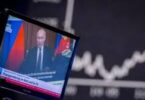Pamela Kennedy · Yun Sun · Yuki Tatsumi · Jenny Town
Just ten days after being inaugurated the Republic of Korea’s 13th President, Yoon Suk-yeol hosted the first leg of President Biden’s first trip to Asia since taking office. The timing of Biden’s visit, so early in Yoon’s presidential term, was largely welcomed in Seoul, helping to counter the impression that Washington is distracted by the war in Ukraine and neglecting worrisome security trends in Asia. During the summit, held May 20-22, the two leaders reiterated the “iron-clad” nature of the bilateral relationship and emphasized the goal of transforming it into a “global, comprehensive, strategic alliance.”
While Yoon himself is a newcomer to politics, many of his cabinet members and key advisors are well known and have served in previous conservative administrations. This helps explain Yoon’s political agility in his first weeks in office—moving the presidential office out of the Blue House to the Defense Ministry compound in Seoul’s Yongsan district, and taking early steps to recalibrate South Korea’s energy and economic policies, deepen bilateral US-ROK security and economic cooperation, lay the foundations for enhancing trilateral (US-ROK-Japan) and multilateral cooperation among like-minded states and among Indo-Pacific partners, and host a summit with the US President.
Despite wide speculation that North Korea would try to steal focus by conducting a missile or nuclear test during Biden’s time in the region, all was quiet on the northern front as Kim Jong Un tended instead to the country’s first officially reported outbreak of COVID-19, which has so far affected more than 2.8 million people nationwide, and rolled out emergency epidemic prevention procedures. Whether the North’s testing hiatus was planned, brought about by the COVID-19 outbreak, or simply delayed for some other reason is unclear. But the net effect of back-to-back missile testing since January has been a renewed sense of urgency for deepening US-ROK alliance cooperation and capabilities.
The US and ROK have both expressed their willingness to provide COVID-related aid, assistance, and vaccines to North Korea (although received no responses yet from Pyongyang). However, as underscored in the US-ROK summit Joint Statement, the common goal of “complete denuclearization of the Korean Peninsula” serves as the basis for inter-Korean diplomacy and improved relations. Until that is achieved, Biden and Yoon committed to begin discussions on expanding the scope and scale of joint military exercises, deploying US strategic military assets to the region in a “timely and coordinated manner,” reactivating regular, high-level, extended deterrence consultations, expanding cooperation on cyber security and defense measures, and identifying “new and additional steps to reinforce deterrence” amid North Korea’s continued WMD advancements.
Building on the commitments made during the 2021 summit between Biden and former ROK President Moon Jae-in, the two leaders reiterated the need and mutual benefits of expanded economic security cooperation. South Korea has long been calling for some form of extended economic deterrence as a way of mitigating China’s coercive economic power.1 Moreover, supply chain disruptions during the pandemic served as a stark reminder of the dangers of economic overdependence on any one source. As such, Biden and Yoon pledged to launch an economic security dialogue to discuss and coordinate expanded cooperation in supply chains, emerging technologies, civil nuclear energy, and other relevant areas necessary for sustainable growth and financial stability. The two also agreed to begin discussion of “reciprocal Defense Procurement Agreement,” likened to a defense sector free trade agreement. South Korea even expressed interest in joining the Quad and agreed to become a founding member of the US-led Indo-Pacific Economic Framework for Prosperity, an emerging forum for enhancing economic cooperation among like-minded states.
While this new level of cooperation appears to be welcomed in Washington, Beijing has already expressed serious concerns with how South Korea’s foreign policy strategy is evolving and has complained more broadly about the re-formation of Cold War era ideological blocs. During the Biden-Yoon summit, China held its own military exercises in the South China Sea and complained about the US leading efforts to interfere in China’s international affairs, warning reciprocal actions could be taken.
Overall, the US-ROK summit can be seen as largely successful. The two leaders emphasized shared values and common goals for the alliance and a growing role for South Korea in regional cooperation. However, while the joint statement included a clear condemnation of Russia’s invasion of Ukraine and the coup in Myanmar, it avoided the kind of direct references to China that were present in the statement issued after the later summit between Biden and Japanese Prime Minister Fumio Kishida. This suggests that even with Yoon’s increased clarity about South Korea’s strategic alignment, the sustainability of this approach is still in question.
Biden’s Concrete Moves Push Back on China’s Regional Agenda
Before Joe Biden embarked on his first trip to Asia, Beijing had expected bad news. But as the trip rolled first to Seoul and then Tokyo, the impact on China is being assessed as notably more negative than many anticipated.
In the Chinese view, Biden’s joint statement with President Yoon in South Korea largely, if not entirely, reversed achievements China had made in the past ten years to undermine the US-ROK alliance. From the return to a deterrence-focused DPRK policy and increased supply chain cooperation to the potential deployment of strategic U.S. military assets and US-ROK cooperation on IPEF, the South Korea leg of Biden’s trip touched sensitive nerves in China. The Chinese find themselves in a difficult position, worried that by prioritizing deterrence against DPRK, Washington and Seoul aim to marginalize China’s influence on the Korean peninsula.
The question is what China might do about it. China remains South Korea’s largest trading partner, with 25.3% of ROK’s total exports. In 2016, China was able to use the leverage of unofficial economic sanctions against South Korea after Seoul’s decision to deploy the THAAD system. But this time around, China worries the economic card may have the effect of driving South Korea further away at a time when Seoul is already contemplating deepened supply chain cooperation with the U.S. And with President Yoon only just sworn in, threatening sanctions so early in his term could rile South Korea’s policy toward China for the next five years. A new round of North Korean provocation might bring China some leverage. However, history shows that China’s inability to deliver a satisfactory response to North Korean provocations will likely take an additional toll on China-South Korea relations. South Korea decided to deploy the THAAD system when China failed to adequately respond to North Korea’s 4th nuclear test in early 2016.
Most Chinese attention on Biden’s visit to Japan has been focused on his commitment to military intervention in the event an attack on Taiwan. Some Chinese argue this is an official departure from the U.S. policy of “strategic ambiguity,” while others see it as only the most recent step in a U.S. salami-slicing policy towards Taiwan. After all, what Biden said is not necessarily untrue; no one in Washington today could imagine the U.S. standing by if China attacked Taiwan. Such a move would violate the U.S. long-term bottom line that “peaceful resolution” of the Taiwan issue is necessary. And as seen in Ukraine, “military intervention” can take many forms.
How will China respond? PLA military drills near Taiwan and encirclement of the island by PLA fighter jets and naval vessels have become a regular event in response to developing US-Taiwan relations. Few expect this time to be an exception.
There are also other important events from the trip, including the announcement of the IPEF and the QUAD meeting. Rarely has a president’s visit to Asia led to this many concrete deliverables that push back on China’s regional agenda. In that sense, it has been a very successful trip indeed.
US and Taiwan: Deterring China While Deepening Regional Ties
As President Biden meets with Asian allies and partners launch the Indo-Pacific Economic Framework (IPEF), the statement that he is willing to defend Taiwan from attack prompted sharp objections from China and added fuel to the debate over the U.S. policy of strategic ambiguity. But the issue of Taiwan’s economic integration—though Taiwan has been excluded from the initial invitations to the IPEF—may be more important for Taiwan’s international participation in the long run.
Biden’s comments in Tokyo that the U.S. had made a “commitment” to defend Taiwan is the latest in a string of statements by Biden supporting U.S. involvement in a Taiwan Strait crisis. Each time, including Monday’s comment, the White House has clarified that the U.S. policy towards Taiwan has not changed; Biden himself clarified on Tuesday there was no policy change. But the question Beijing is surely pondering is whether Biden’s off-script comments cumulatively indicate that the U.S. stance on strategic ambiguity is shifting towards greater resolve, and whether this is a harbinger for a more concrete policy change in the future.
That seems unlikely. The message that the Biden administration intends to send is not a policy change but a warning to deter China: the use of force against Taiwan would, in Biden’s words, “dislocate the entire region” and draw condemnation from the international community, as Russia’s invasion of Ukraine has done. The Biden administration’s view of deterrence includes not only the possibility that the United States might get involved, but the prospect that China might face sanctions and censure from the broader community. This fits the theme of U.S. regional engagement and partnership that Biden is promoting.
Of course, under strategic ambiguity, China has always had to include U.S. involvement in its calculus towards Taiwan. What may be of greater consequence in the long run is the part of Biden’s trip that conspicuously did not include Taiwan—the launch of IPEF and U.S. movement towards stronger regional economic integration. Despite Taiwan’s exclusion from IPEF, the United States and other partners have made efforts to strengthen their individual economic ties with Taiwan. As the world’s largest producer of semiconductors, Taiwan was highlighted in the U.S.’s June 2021 supply chain resiliency assessment. Meanwhile, Japan is also seeking to deepen economic security cooperation with Taiwan, including encouraging Taiwan’s application to the regional trade pact CPTPP.
Excluding Taiwan from IPEF is a political maneuver that allows the U.S. to court countries that are wary of provoking China, but this does not diminish the importance of Taiwan’s position in the global economy. Building stronger economic ties gives Taiwan’s partners greater stakes in the stability of cross-Strait relations. The integration of Taiwan into regional economic frameworks would represent a level of international cooperation with Taiwan that China would not accept, but such integration is increasingly sensible for supply chain security, despite the political obstacles. Those ties may strengthen regional resistance to China’s ambitions with Taiwan.
Commitments Show US-Japan Alliance Remains Central to Foreign Policy of Both Countries
Both leaders used the occasion to showcase the breadth, depth, and strength of the alliance. In addition to reaffirming their respective country’s commitment to joint efforts for the “Free and Open Indo-Pacific,” both leaders announced progress on bilateral cooperation on a number of issues from defense cooperation to climate change to economic security.
They also used the occasion as a tool for strategic messaging vis-à-vis China. While Biden stole headlines by articulating that the U.S. would intervene militarily if China attempts to reunify Taiwan by force, Kishida chose to host a dinner for Biden at an exclusive inn located in Happoen—a location where Sun Yat-sen stayed while in exile. They also called out China in their joint statement, urging Beijing to stand against Russia’s invasion of Ukraine and join the international community’s effort to uphold an rules-based international order.
In addition to joint progress, the two leaders also succeeded in pushing agenda items that were important for them individually. Biden was able to get Japan’s buy-in for his new Indo-Pacific Economic Framework (IPEF) initiative. During the Obama administration, Japan’s similar support was essential for the Trans Pacific-Partnership (TPP) negotiations. Given the level of effort required for Tokyo to hold the TPP grouping together — in the form of the Comprehensive and Progressive Agreement for Trans Pacific Partnership (CPTPP) — after the U.S. withdrawal pulled the rug out from under Japan, Kishida’s support for the IPEF means a great deal. Biden and Kishida were also able to agree on cooperation on issues such as supply chain resiliency on critical materials like semiconductors and rare earth minerals, which the Administration consider important for the U.S. economy. Finally, Biden secured Japan’s commitment to a “substantial increase” in defense spending, which is consistent with the Administration’s goal of a more equitable and reciprocal alliance.
For his own sake, Kishida succeeded in securing Biden’s commitment to issues that are important for both Japan and Kishida’s future as well. On Japan’s pressing security concerns, Kishida was able to reconfirm the Administration’s support for the defense of Japan in the event of a Chinese attempt to occupy the Senkaku Islands. More broadly on Japan’s overall foreign policy, he was also able to secure Biden’s support for United Nations reform, including Japanese permanent membership in a reformed Security Council—one of Japan’s major post-World War II foreign policy goals. Furthermore, as the two governments have stood firm against North Korea’s increasingly provocative behavior, Biden met with the families of abductees for a meeting that ran longer than was planned, reassuring the families of U.S. support for resolution of the issue. Personally for Kishida as well, he told Biden of his intention of hosting next year’s G7 summit in his hometown Hiroshima, expressing his desire to leverage the occasion to renew the push for nuclear disarmament.
Being able to end Biden’s visit with a “win-win” summit, the U.S. and Japan have successfully positioned the bilateral alliance as the key vehicle for both countries to continue to press for their foreign and security policy agenda.
Courtesy: (stimson.org)






